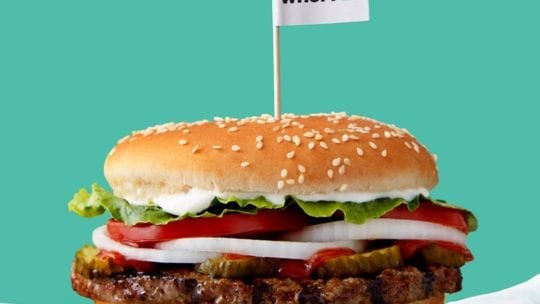
Years from now, when historians chronicle the current era, the phrase fake news may have a place in their writing. If it’s not the most-repeated phrase of the past several years, rivaling you’re on mute, it’s one of them. The phrase certainly has pressured the truth, a once immutable concept.
Yet variations on the truth are far from new. Yellow journalism originated in the 1890s. Favoring sensationalism over fact, it helped sell newspapers and led the U.S. into war.
And looking back even longer in history, the principle of Caveat Emptor, or buyer beware, is, as a principle of law, at least a few hundred years older than yellow journalism. We may think disinformation is a new trend, but didn’t a manipulative vertebrate allegedly deceive Adam and Eve years ago?
Still, as we know, integrity, authenticity and transparency are hallmarks of PR, despite occasional lapses. They’re vital for long-term success in customer service, employee and media relations and reputation.
Honesty Day and the truth
Last year, to mark Honesty Day (April 29), veteran PR pros hailed the truth. "Truth is the only public relations that endures," Michael Smart told us. kglobal’s Daniel Rene said, “Those of us who’ve decided to make a career out of public relations know you can’t last if you don’t tell the truth.” And Chris Hamilton, SVP, media relations, at Current Global, added, “In media relations…honesty must be the number one currency for any company, brand or business.”
However, some PR pros apply a caveat–there’s that c-word again–when discussing authenticity and transparency, particularly during a PR crisis. Be as transparent and authentic as possible, communicators will say. The truth, for some, has degrees.
For example, we know part of PR’s job is emphasizing the best aspects of products and services. Omitting the negatives is allowable in most sectors, except for highly regulated ones, where messaging is monitored. On the other hand, some companies get away with things and/or it takes years to prove their guilt.
How far can we stretch the truth?
For PR, marketing and advertising, what’s a reasonable amount of fact stretching before it’s considered lying? For example, how many products and companies describe themselves as industry leaders? Plenty. They all can’t be, but everybody knows that.
Similarly, in theory no contact is allowed in basketball. In practice, there's a lot. The referee's job is determining a reasonable level of contact. So, back to PR, how much fudging is acceptable before it's classified as lying?
Food is a regulated industry. Still, it has nuances. Indeed, one of the first things children are taught in primary school when the concept of advertising is broached involves fudging.
For instance, that ad featuring a shiny, juicy holiday turkey isn’t what it seems. The bird’s skin looks especially shiny and delicious on TV. But don't eat it, our teachers tell us, because it’s coated with the same shellac that produces a rich, brownish hue on wood. So, as kids we learn not everything is as it appears.
And as adults we know the truth has gradations. When we see the razor ad, we know it won’t produce a shave so close everyone wants to touch your skin.
Even one white lie is too much
Of course, the slippery slope argument gets raised at this point. A small lie can lead to more and larger fibs, advocates contend.
Remember the tumult, in 2018, when Hope Hicks allegedly admitted that PR requires little white lies? More recently, we've seen Russian officials referring to the Feb. 24 entry into Ukraine as a “special military operation” instead of an invasion. It's another shellacked turkey. Whatever it's called, Ukraine's condition is awful. Again, this is not new. For instance, the U.S. never fought the Korean War. Officially, it was a “police action.”
Word games are one thing, but Moscow referring to corpses in Bucha as "fake" seems egregious.
Still, truth sometimes is fickle. As noted above, regulated industries keep close watch on fibs. Yet look at the food sector and its shellacked turkeys. In fact, a food subset, fast food, may help define the difference between lying and reasonable truth stretching. And it might be a game of inches.
It's good to be the king?
A group of plaintiffs is suing Burger King, claiming its Whopper ads are false. The Whopper isn’t as large as it appears in ads, they say in court documents, filed March 28 in Florida. In addition, Burger King has told the big lie (no, not that one) since 2017, the class-action alleges. Moreover, nearly every item on the menu is falsely advertised, the plaintiffs claim.
Perhaps the special sauce in this suit is timing. Part of the complaint notes that with inflationary food prices, ads claiming a Whopper is so large it falls over the side of a bun when, in fact, it does not, is particularly unjust. The suit claims the Whopper looks 35 percent larger in ads than in person.
But doesn’t Burger King’s stretch equate to the turkey-ad example above? Again, nobody actually believes the Whopper is as large as it appears in ads, correct?
Maybe the point is that stretching truths in fast food advertising is unacceptable. The U.K., a country that knows its kings and queens, whacked BK in 2010 for misleading statements about its chicken burger’s size.
And recall Subway’s embarrassment when it admitted in 2015 its foot-long and six-inch subs weren’t quite as long as claimed. Per settlement of a class-action suit, Subway now measures subs periodically. Interestingly, prior to that case, Subway’s training manual noted its bread wasn’t always quite 12- or 6-inches long and that was OK.
With cameras on mobile phones, food truths are tested regularly. Another UK example makes that case.
It’s clear the truth in PR must be as stringent as in some parts of the food sector.
